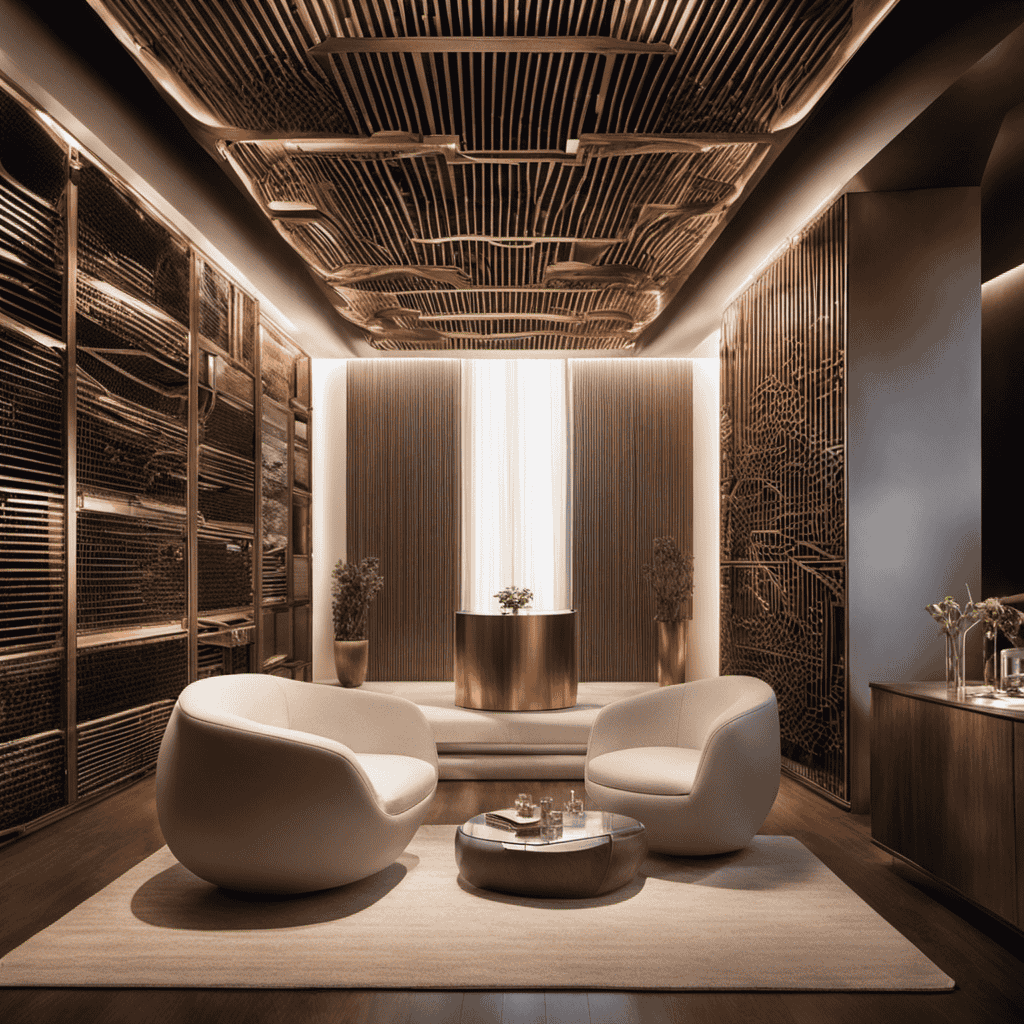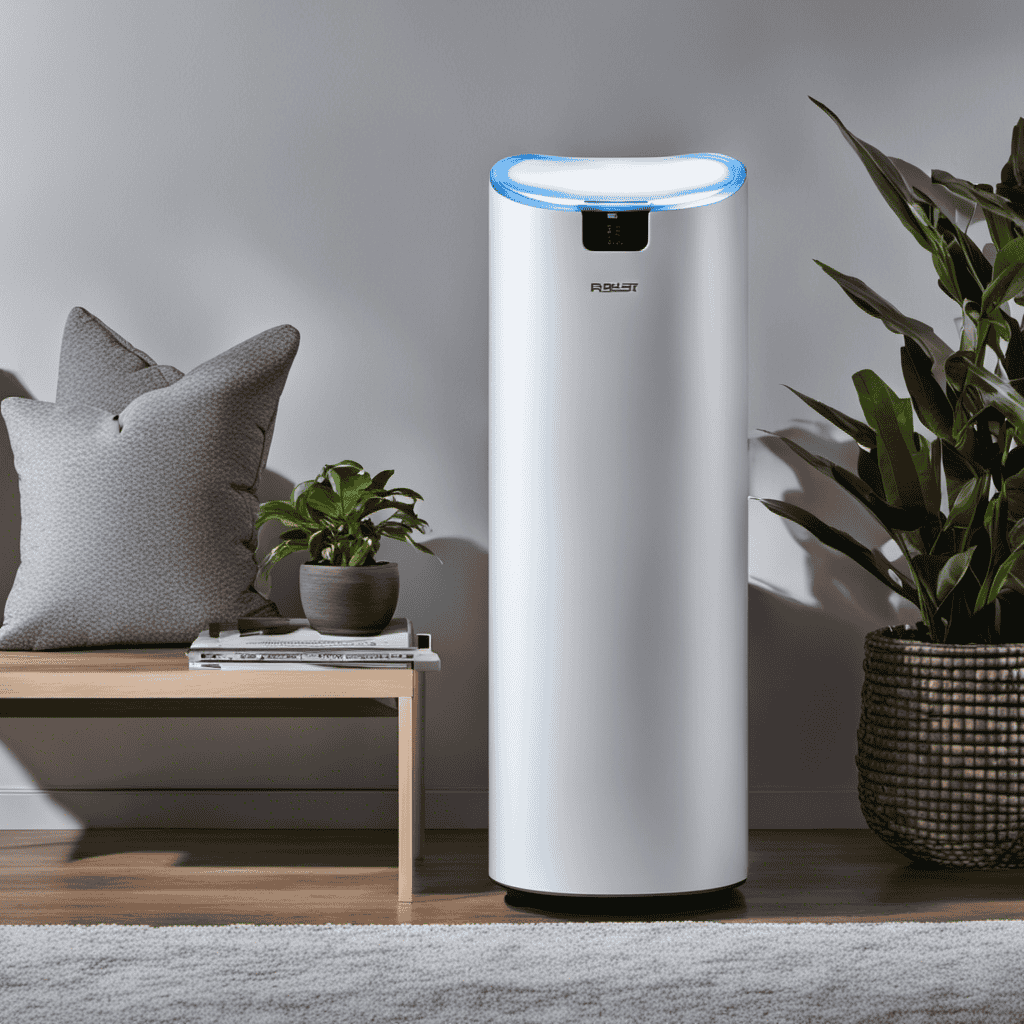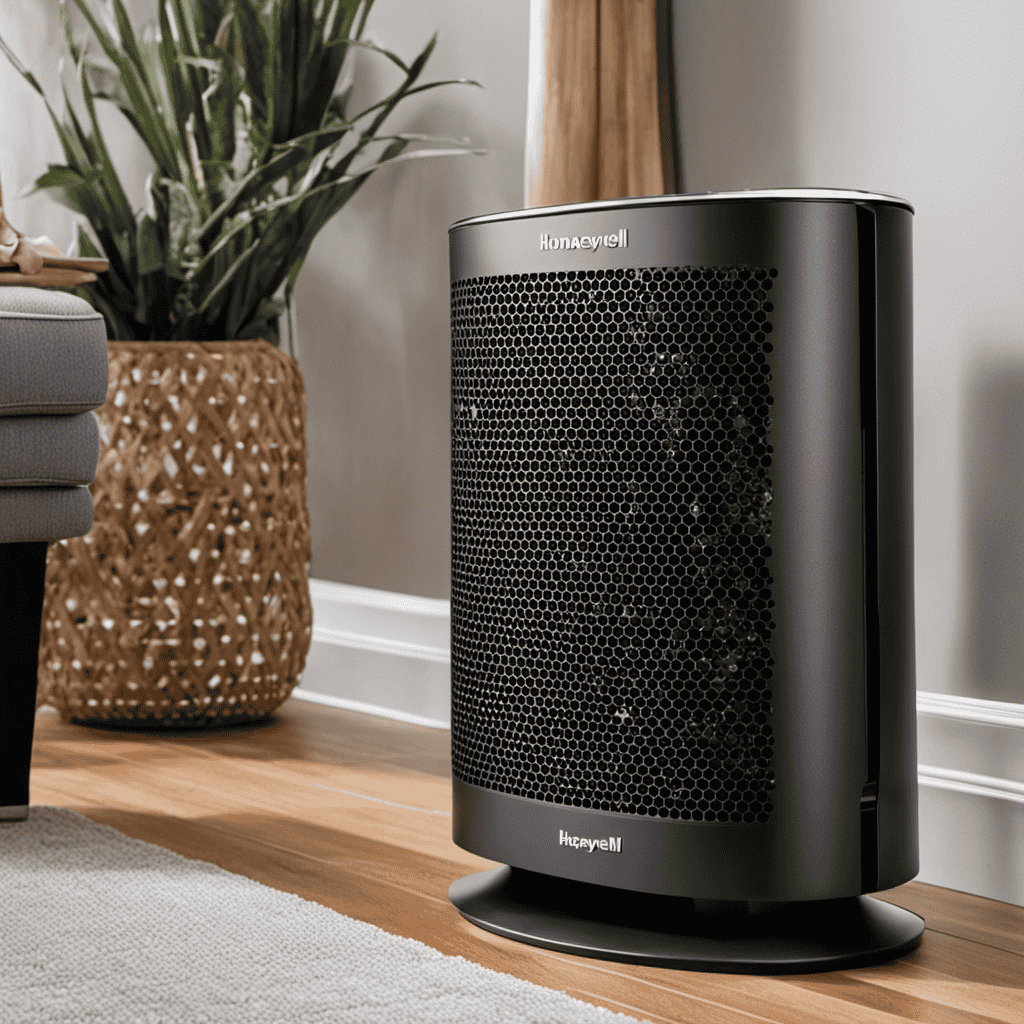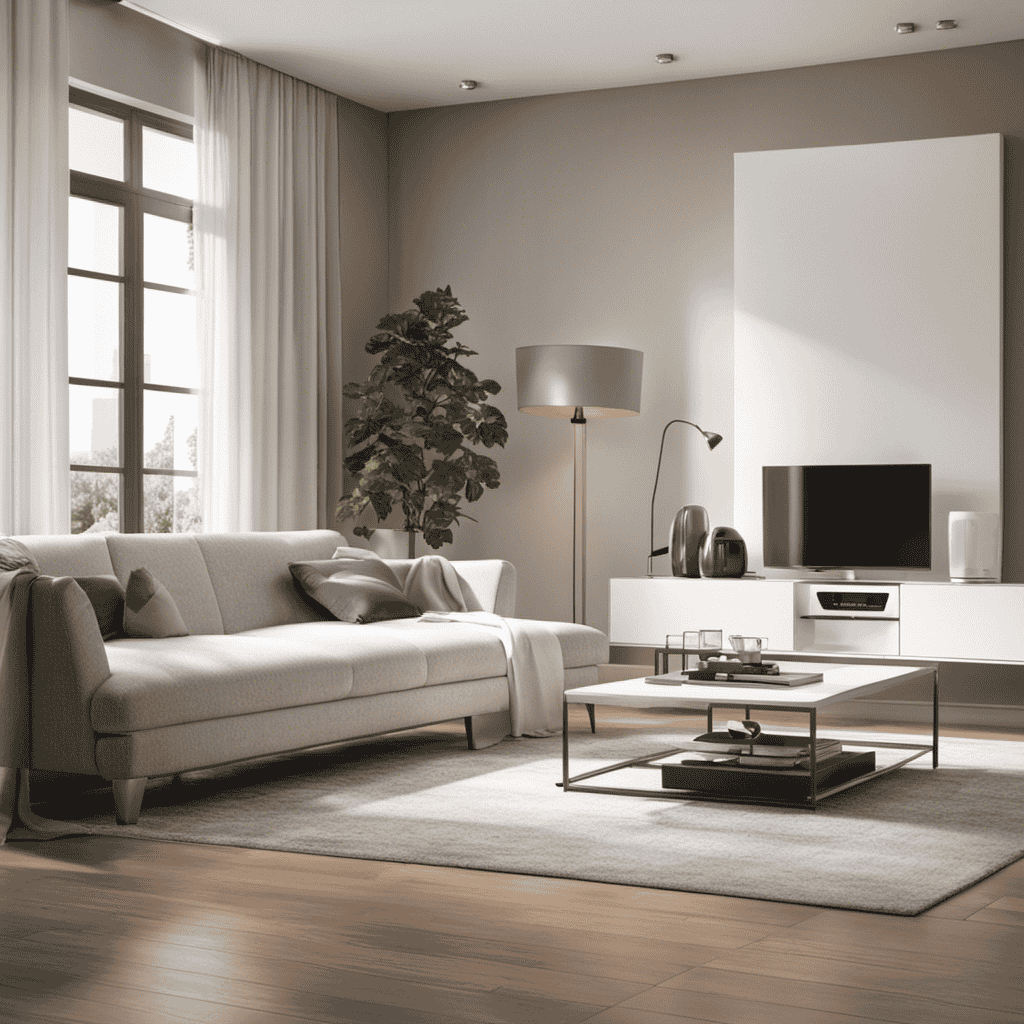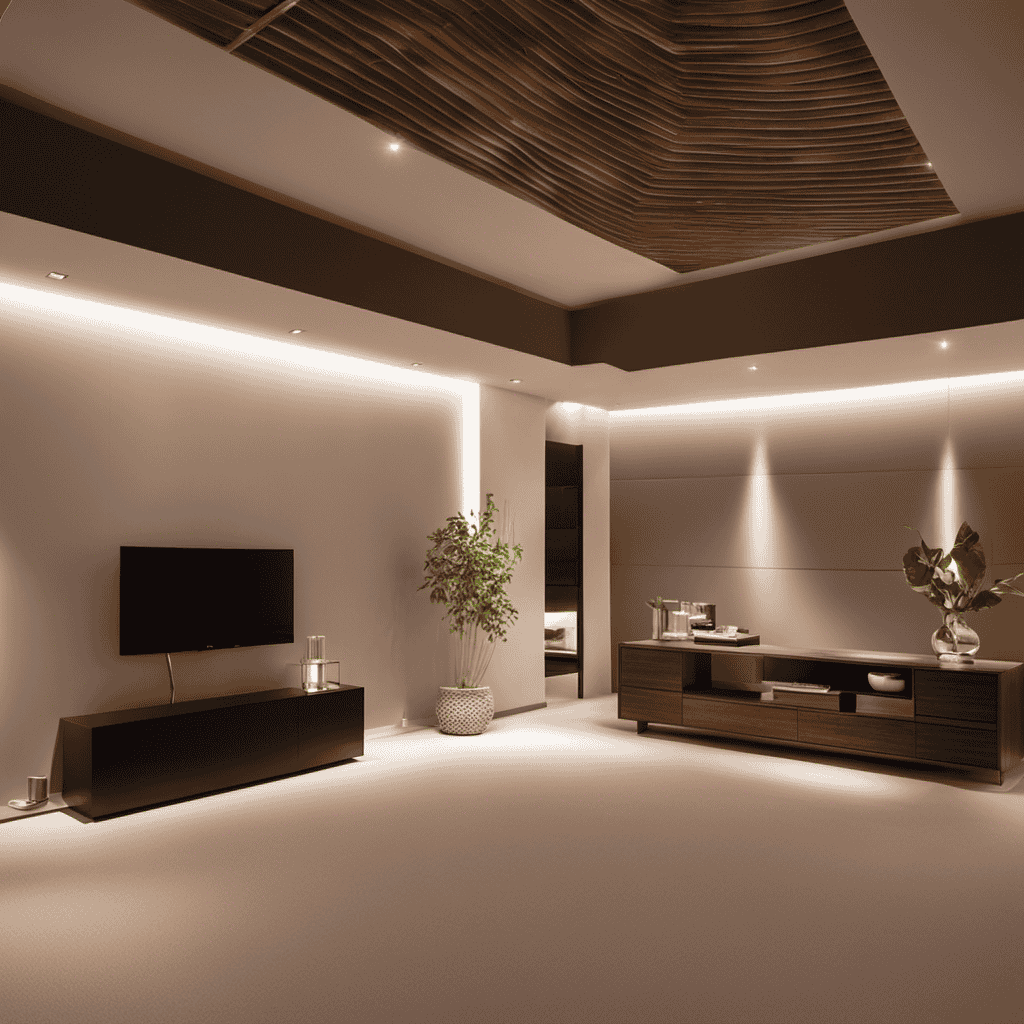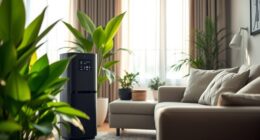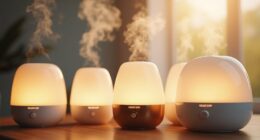As a fan of air purifiers, I can confidently say that learning how an air purifier operates is like getting a glimpse of a breath of fresh air. It’s an intriguing process that includes different purification technologies and essential components.
In this article, we will delve into the nitty-gritty details of the air purification process, discuss factors to consider when choosing an air purifier, and provide tips for its proper maintenance and care.
So, let’s embark on this air-purifying journey together!
Key Takeaways
- There are various air purification technologies available, such as electrostatic precipitator and UV-C light filtration, that effectively remove harmful particles and pathogens from the air.
- The air purification process involves filtration, activated carbon filters, UV-C sterilization, and ionization to capture particles, remove odors, and kill bacteria and viruses.
- An important component of an air purifier is the activated carbon filter, which effectively removes odors, gases, and volatile organic compounds (VOCs) for better air quality and well-being.
- When choosing an air purifier, factors to consider include room size, HEPA filter efficiency, noise level, price range, and conducting thorough research to find the right fit for specific needs.
Types of Air Purification Technologies
There are various types of air purification technologies available in the market today. One such technology is the electrostatic precipitator, which works by using an electrical charge to remove airborne particles. This device attracts particles to a collection plate, effectively cleaning the air.
Another type of air purification technology is UV C light filtration. This technology utilizes ultraviolet light to kill bacteria, viruses, and other pathogens in the air. UV C light damages the DNA of these microorganisms, rendering them unable to multiply and cause harm.
Both the electrostatic precipitator and UV C light filtration are effective methods of purifying the air by removing harmful particles and pathogens. It is important to consider these technologies when choosing an air purifier for a cleaner and healthier environment.
Understanding the Air Purification Process
To understand how an air purifier operates, it’s important to grasp the air purification process. Air purification plays a vital role in maintaining indoor air quality, removing harmful pollutants and allergens from the air we breathe. Here are four key aspects of the air purification process:
-
Filtration: Air purifiers use filters to capture particles such as dust, pollen, pet dander, and mold spores. These filters trap these particles, preventing them from recirculating in the air.
-
Activated Carbon: Many air purifiers also contain activated carbon filters. These filters are effective at removing odors, gases, and volatile organic compounds (VOCs) from the air.
-
UV-C Sterilization: Some air purifiers utilize ultraviolet (UV-C) light to kill bacteria, viruses, and other microorganisms. UV-C light damages the DNA of these pathogens, rendering them inactive.
-
Ionization: Ionizers release negatively charged ions into the air, which attach to and neutralize airborne particles. This process causes the particles to become too heavy to remain airborne, causing them to fall to the ground or be captured by the air purifier.
Key Components of an Air Purifier
One of the key components of an air purifier is the activated carbon filter. It effectively removes odors, gases, and volatile organic compounds from the air.
Air quality is of utmost importance as it directly impacts our health and well-being. Poor air quality can lead to respiratory issues, allergies, and even serious diseases.
Using an air purifier can significantly improve the air quality in your home or office. By removing harmful pollutants such as dust, pollen, and pet dander, an air purifier helps create a clean and healthy environment.
The activated carbon filter plays a crucial role in this process by adsorbing and trapping these pollutants, effectively eliminating them from the air. This results in fresher, cleaner air, reducing the risk of respiratory problems and enhancing overall well-being.
Using an air purifier with an activated carbon filter is a simple yet effective way to ensure better air quality and reap the benefits it brings.
Factors to Consider When Choosing an Air Purifier
When choosing an air purifier, it’s essential to consider factors such as room size, filtration system, noise level, and price range.
Here are four important factors to keep in mind when selecting an air purifier:
-
Room size: Consider the square footage of the room where you plan to use the air purifier. Different models are designed to clean the air in different-sized spaces, so choose one that suits your needs.
-
Filtration system: Look for air purifiers that feature high-efficiency particulate air (HEPA) filters. These filters can capture up to 99.97% of particles as small as 0.3 microns, including dust, pollen, pet dander, and other airborne pollutants.
-
Noise level: Some air purifiers can be quite noisy, especially when running at higher speeds. If noise is a concern for you, look for models that have a low noise level rating.
-
Price range: Air purifier prices can vary greatly depending on the brand, features, and size. Determine your budget beforehand and look for options within that price range.
When considering these factors and doing thorough research, you can find an air purifier that suits your needs and provides clean, fresh air for your home.
Maintenance and Care for Your Air Purifier
Make sure you regularly clean and replace the filters in your air purifier to maintain its effectiveness in removing pollutants from the air. Proper maintenance and care are essential for ensuring that your air purifier functions optimally and continues to provide clean and fresh air.
One common problem that you may encounter with your air purifier is a decrease in its performance. This can be caused by a clogged or dirty filter, which reduces the airflow and hinders the filtration process. To troubleshoot this issue, simply remove the filter and clean it according to the manufacturer’s instructions.
Another common problem is a strange odor coming from the purifier. This could be due to a dirty filter, stagnant water in the unit, or a malfunctioning fan. Regularly cleaning the filter, emptying and cleaning the water tank, and checking the fan can help resolve this issue.
Frequently Asked Questions
What Are the Common Pollutants That an Air Purifier Can Remove?
An air purifier can remove common pollutants like dust, pollen, pet dander, mold spores, and bacteria from indoor air. This improves indoor air quality and provides numerous benefits for our health and well-being.
How Long Does It Take for an Air Purifier to Effectively Clean the Air in a Room?
It typically takes about 30 minutes for an air purifier to effectively clean the air in a room. This depends on factors like room size and the purifier’s cleaning capacity.
Can an Air Purifier Help With Allergies and Asthma?
Yes, an air purifier can help with allergies and asthma. It filters out allergens and irritants, improving indoor air quality. Its effectiveness depends on the type of purifier and the specific needs of the individual.
Is It Safe to Use an Air Purifier While Sleeping?
Using an air purifier while sleeping has pros and cons. It can help remove allergens and improve air quality, but some models can be noisy or produce ozone. Consider choosing a quiet, ozone-free purifier for your bedroom.
How Often Should the Filters of an Air Purifier Be Replaced?
I replace the filters of my air purifier every 6-12 months. It’s important to choose the right air purifier for your needs and consider the benefits of using one at home, such as improving air quality and reducing allergens.
Conclusion
To sum it all up, air purifiers are truly remarkable devices that work diligently to ensure the air we breathe is clean and pure.
With a wide range of purification technologies available, these machines effectively eliminate harmful pollutants and allergens, leaving our surroundings fresh and healthy.
Understanding the intricate process and key components of an air purifier is crucial for making an informed choice.
Regular maintenance and care are essential to keep your air purifier functioning at its best.
So, let’s embrace the wonders of air purification and indulge in the euphoria of breathing in pristine air.
